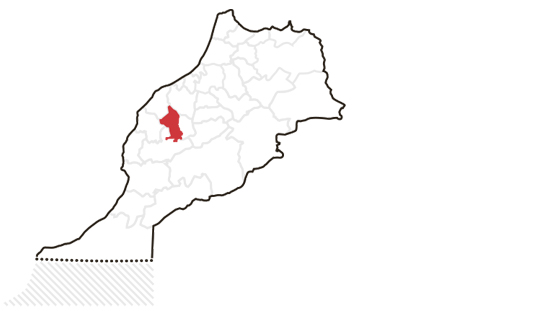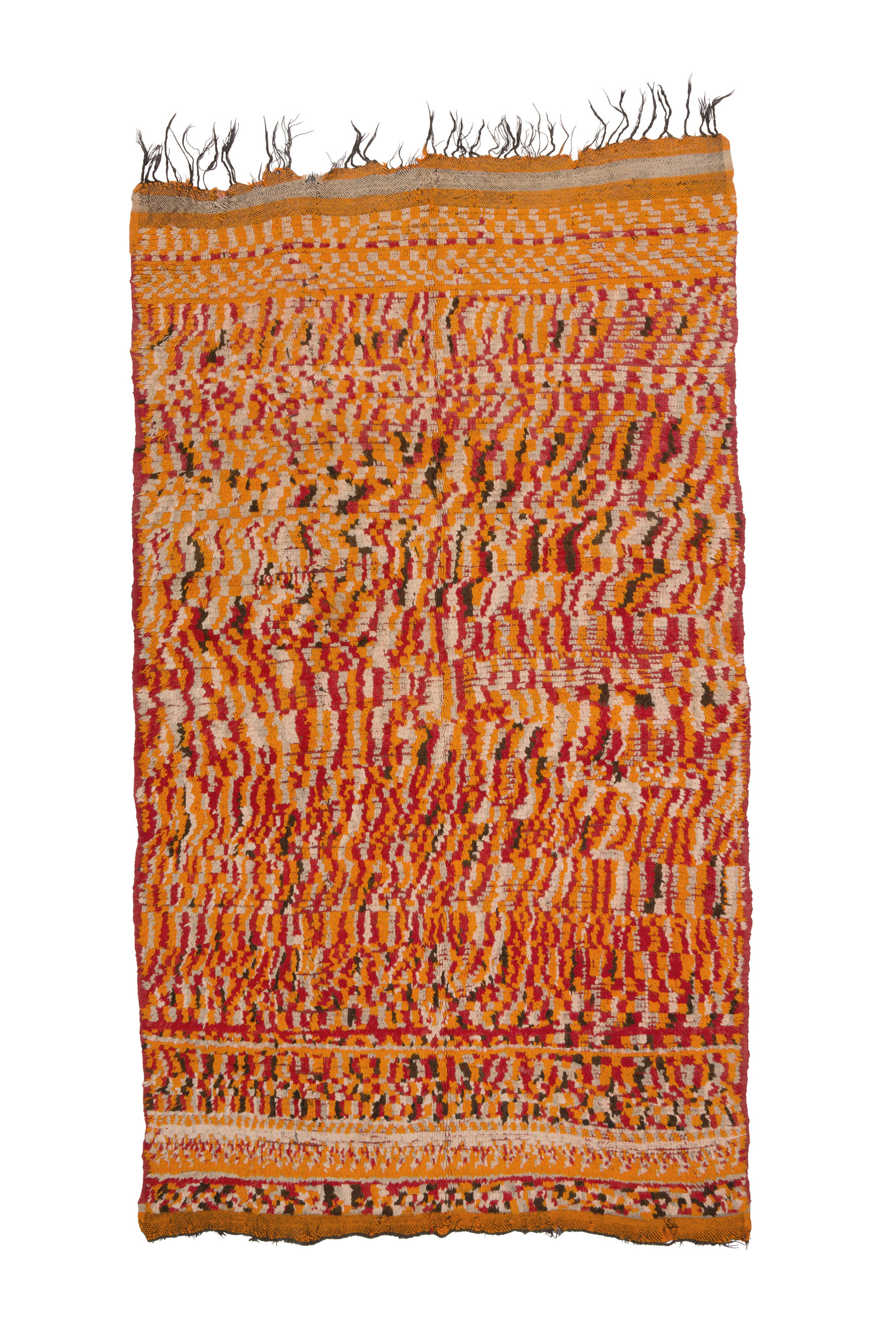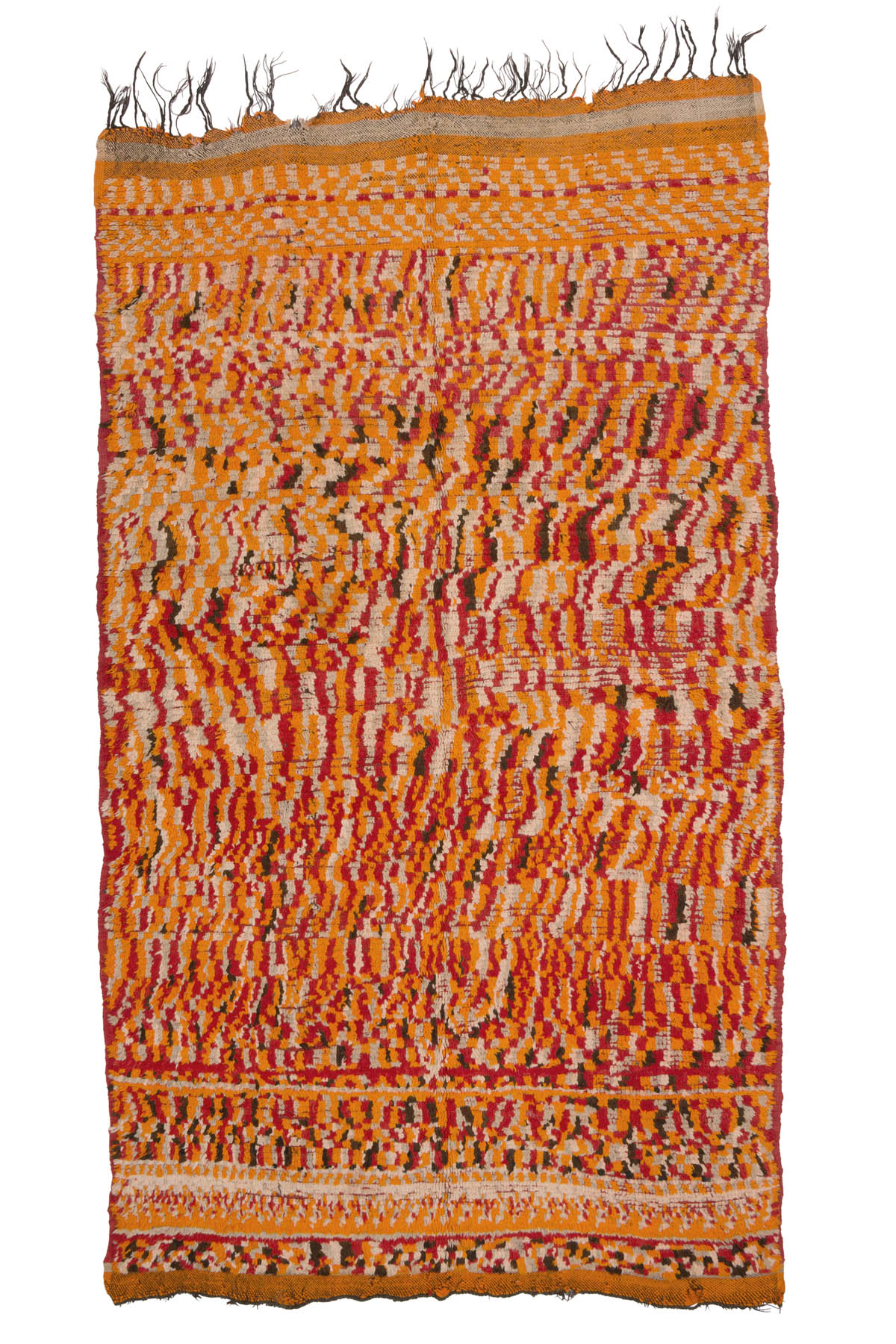REHAMNA N° 291RH
A highly unique Rehamna rug, mid 20th century, from the Plains of Marrakech, with a frenetic, colorful composition. The distorted geometrical pattern, oscillating between irritating and pleasing, is executed with great attention to detail. A similar example was exhibited at the Museum Bellerive in Zurich, in 1996, and is now in the collection of the Musée du Quai Branly in Paris. The rug in the museum is assigned to the Oulad Nemaa, who are at home in the Boujad region neighboring the Rehamna region.
9'8" × 5'8"

The REHAMNA region lies in the Plains of Marrakech, extending northwards of the city Marrakech and is bordered to the north by the Oum Er-Rbia River. The Rehamna tribes consist of two main groups the „Arabs“ and the „Saharans“ which are further divided by smaller groups. Pile rugs can be distinguished by two basic design types: the ‘Qtifa’ and the ‘Zarbia’. The first type is a monochromatic ground field in red or orange, often with abrash, occasionally featuring a few sparsely scattered motifs. The second type is often heavily decorated. Both types share some common characteristics including a red or orange field that is typically framed by sawtooth edges, a warp made with goat hair (sometimes mixed with wool) and striped kilim bands on both ends (up to 40 cm long in older examples). Pieces made before the mid 20th century are remarkably fine in comparison to other rural Moroccan rugs. Rehamna rugs are known for their highly artistic and unpredictable designs using free forms, chains of diamonds, squares, checker board motifs, asymmetric arrangement of lines or influences from Rabat carpets. They should not be confused with rugs from the Ahmar or the Ouled Bou Sbaâ which are situated further south.

